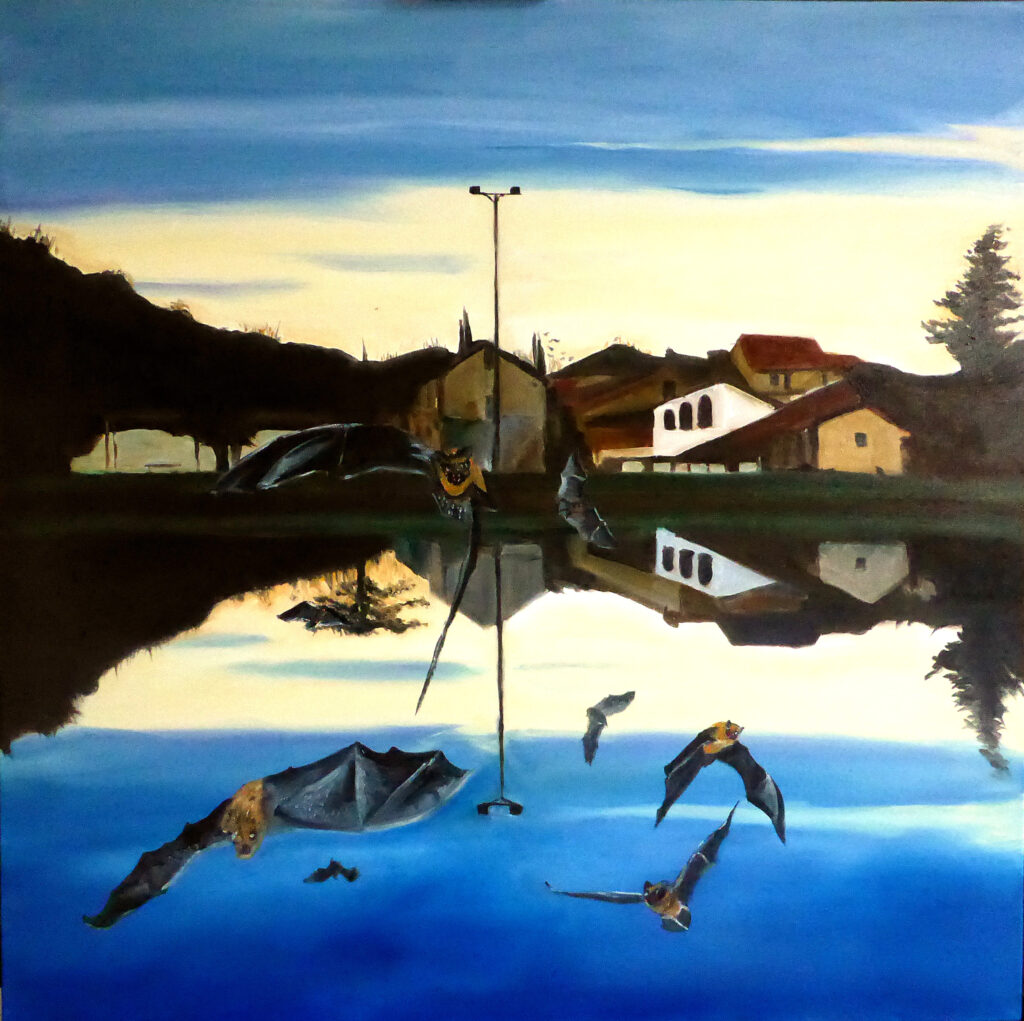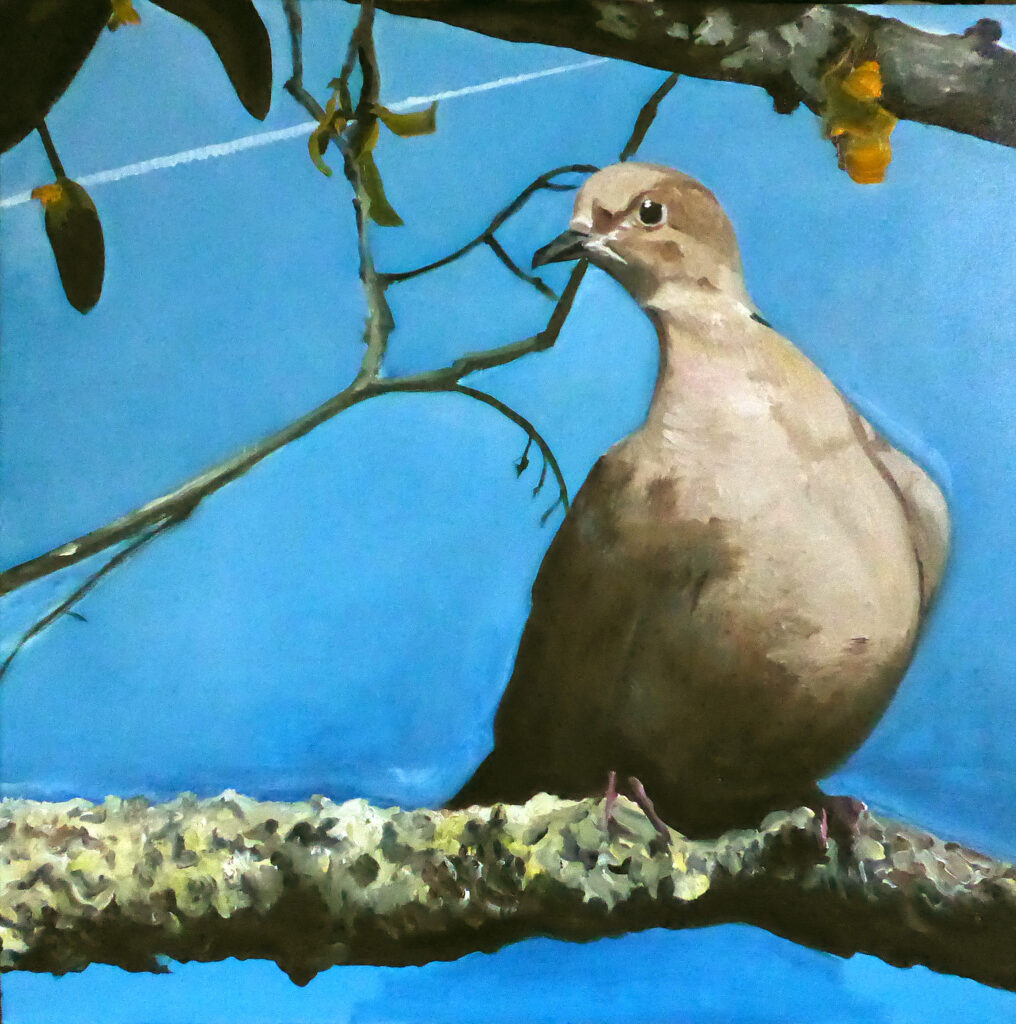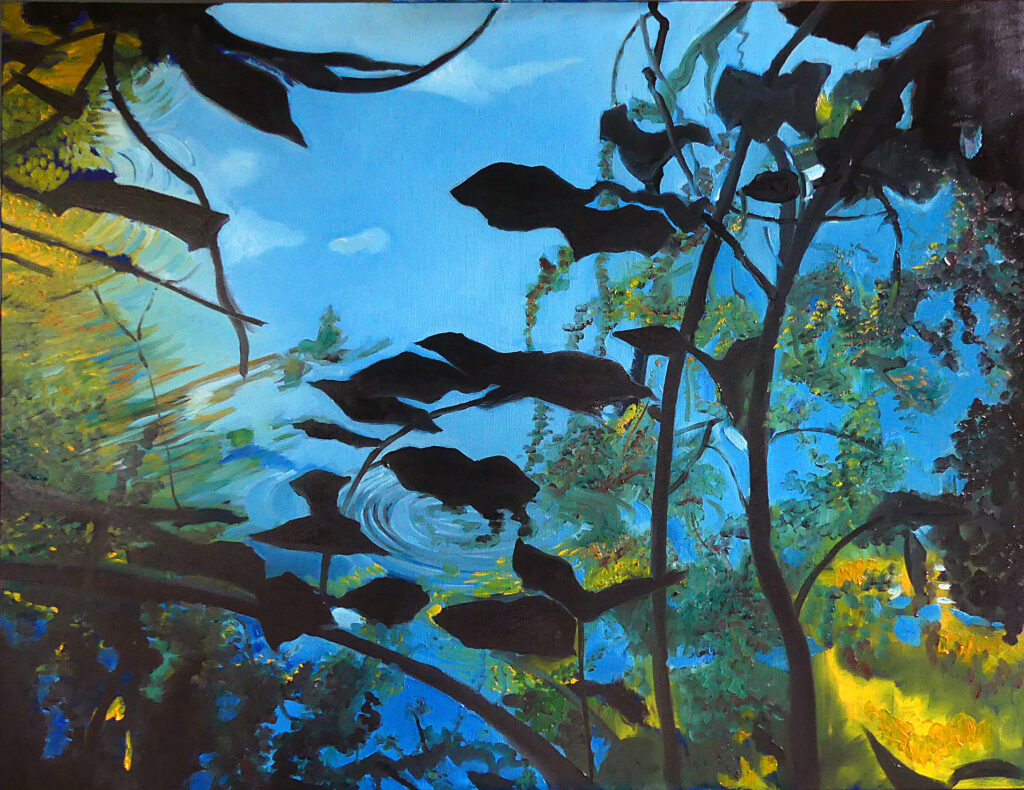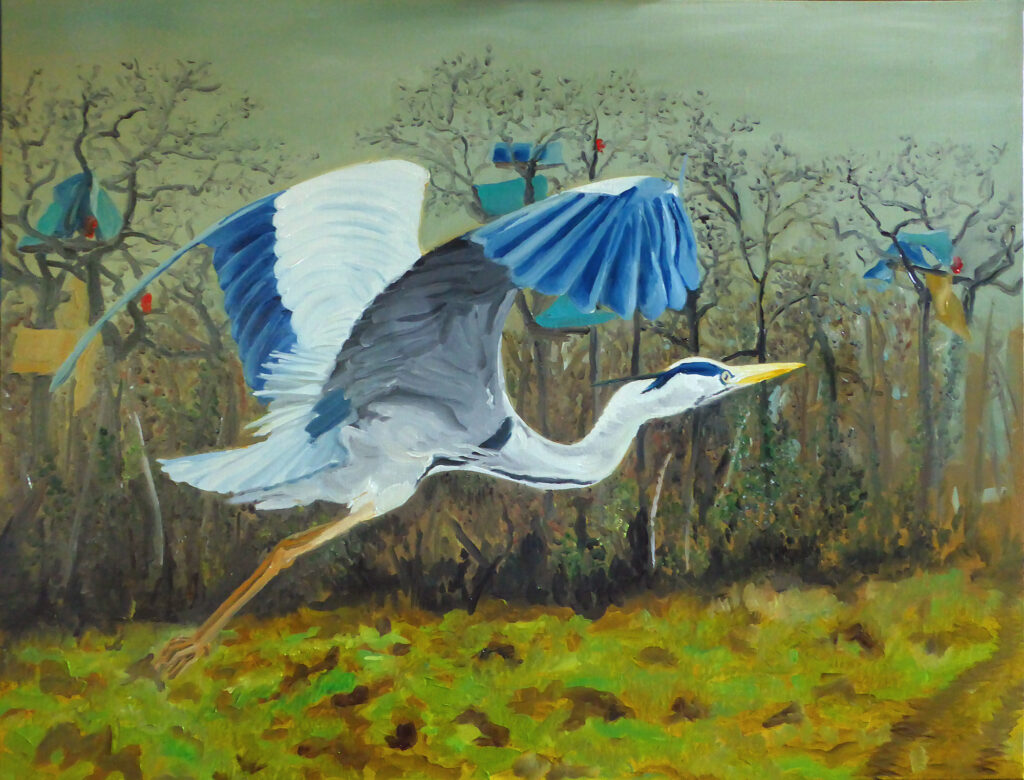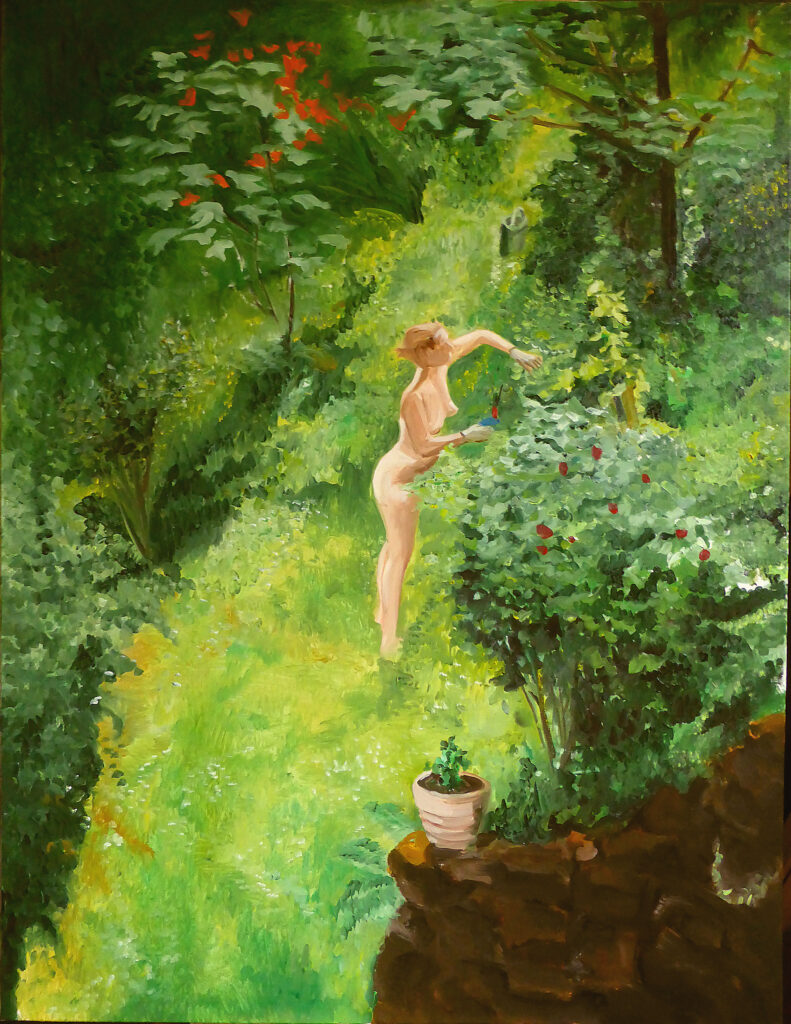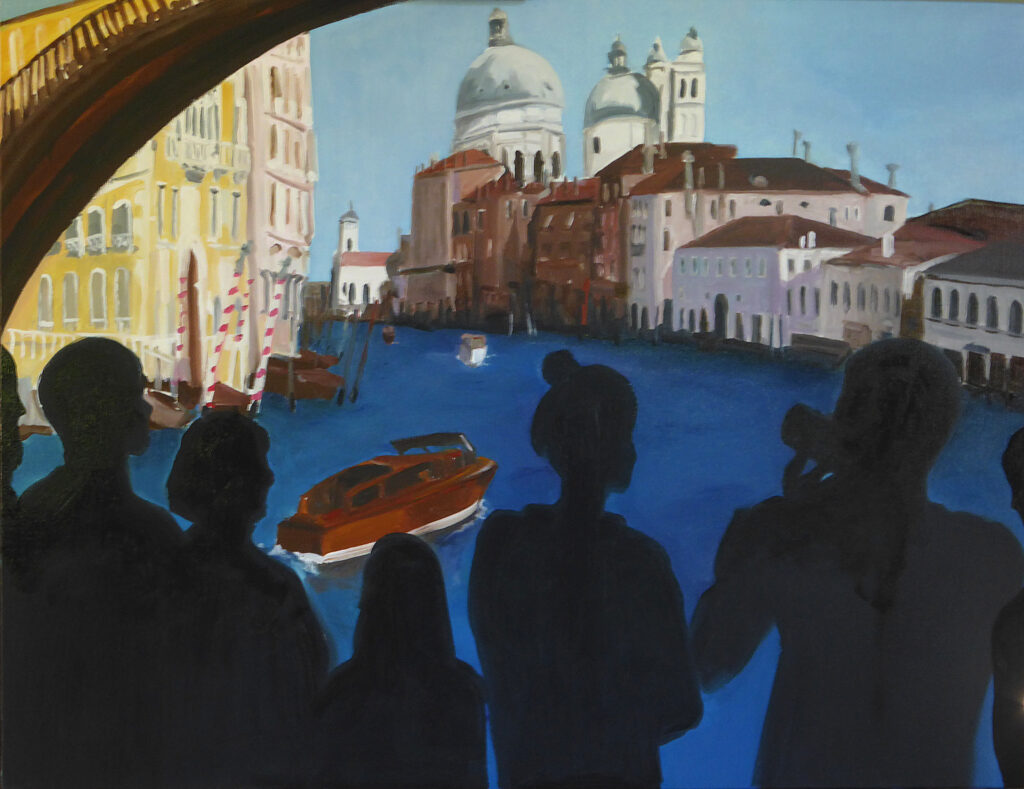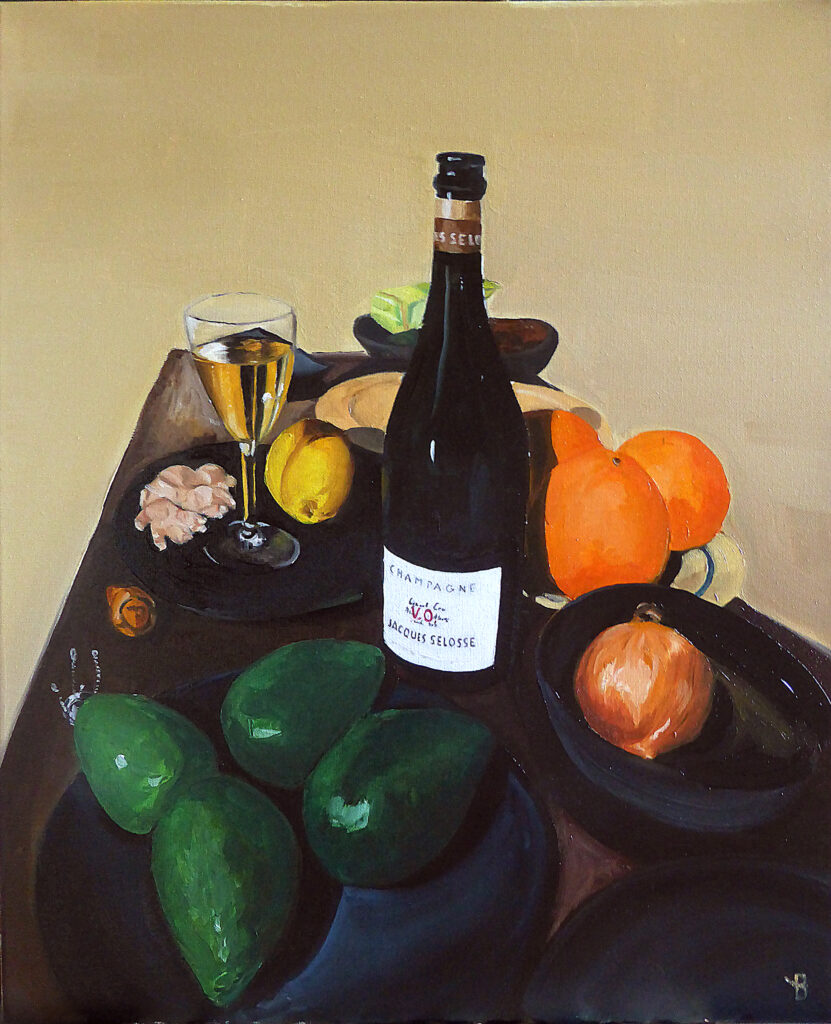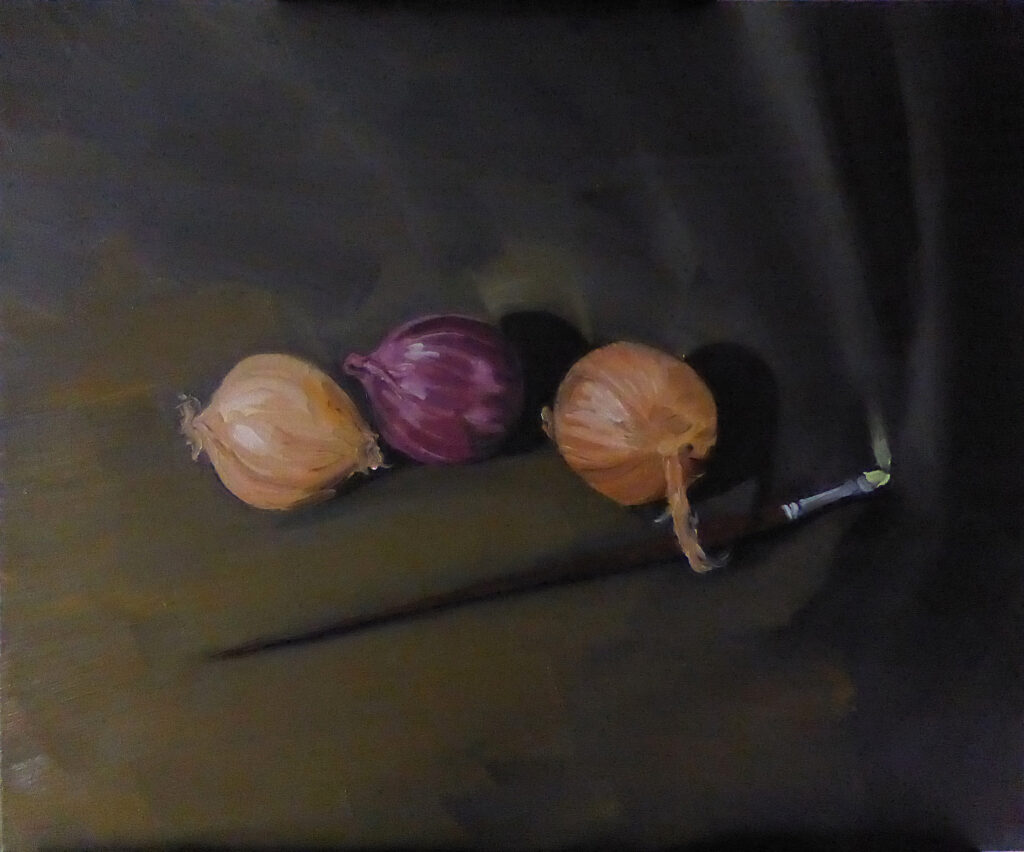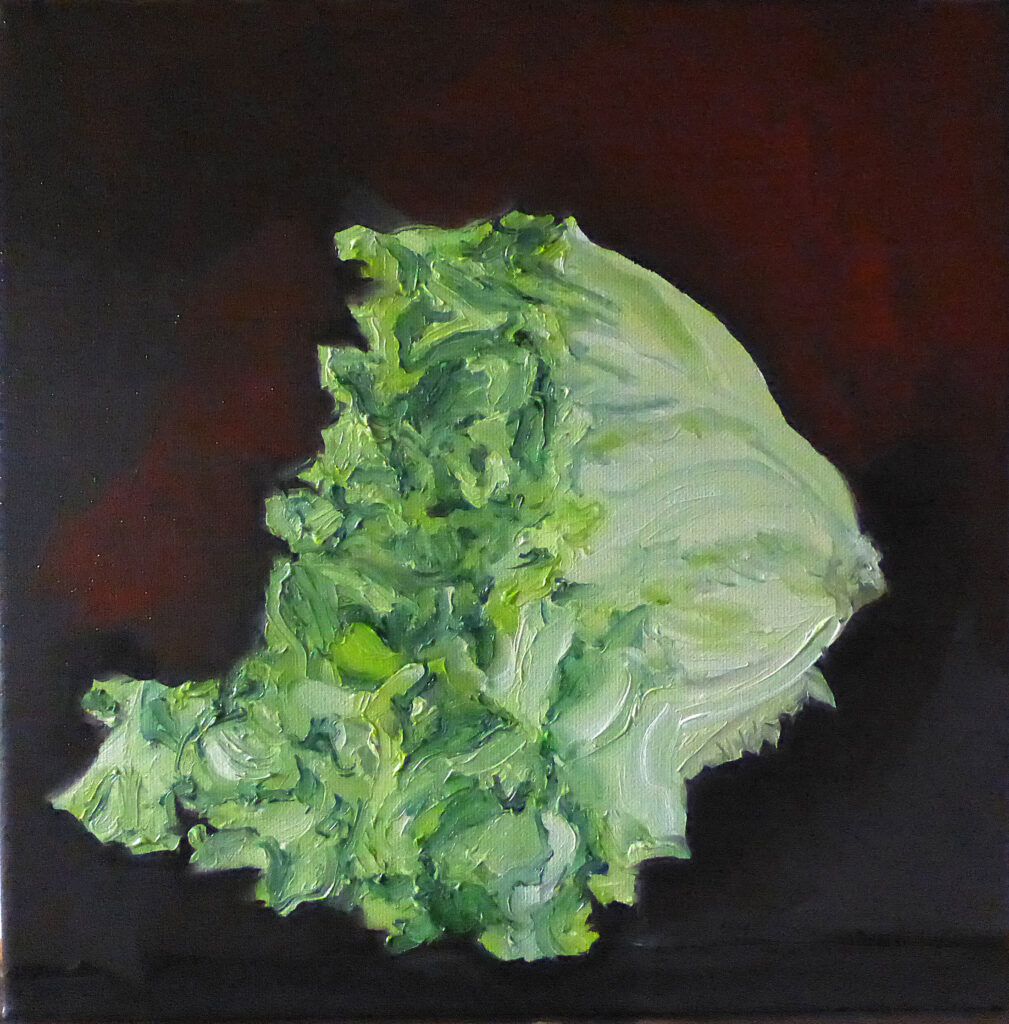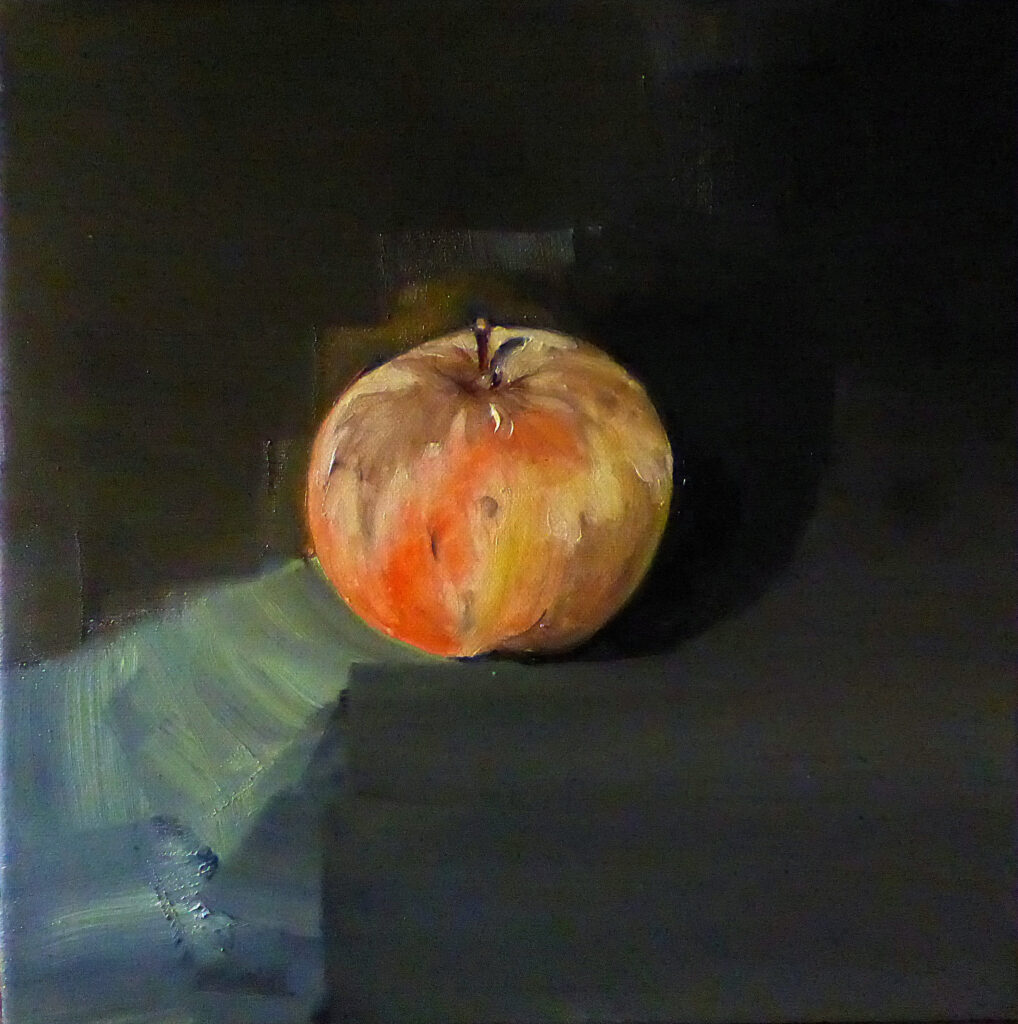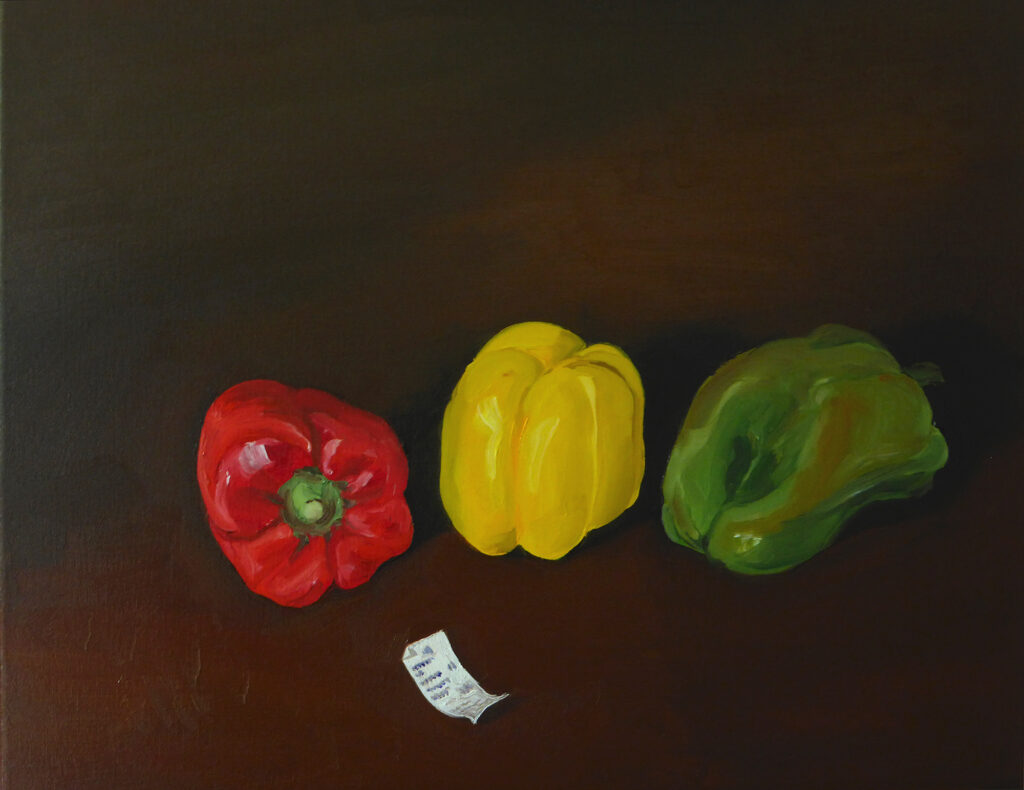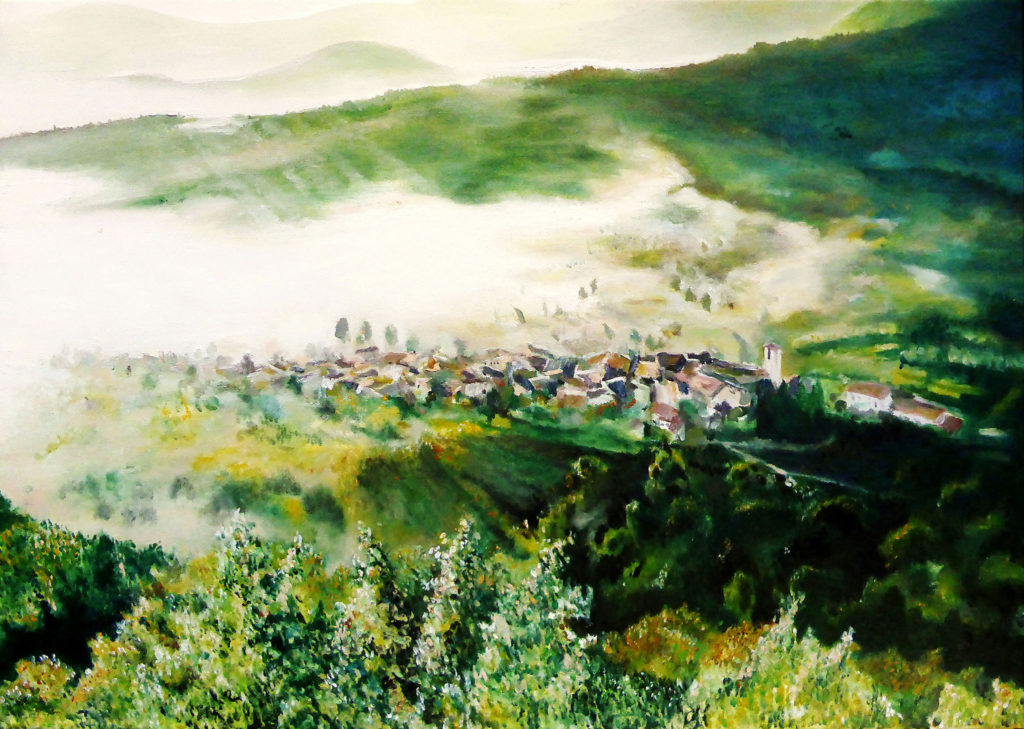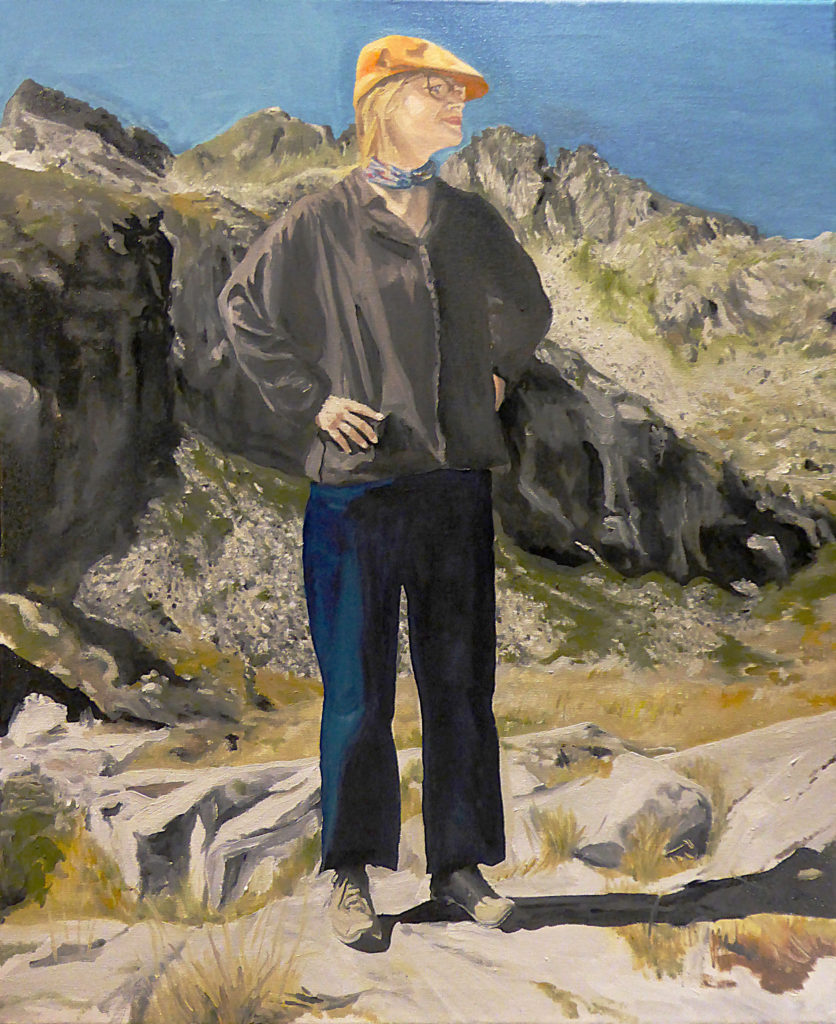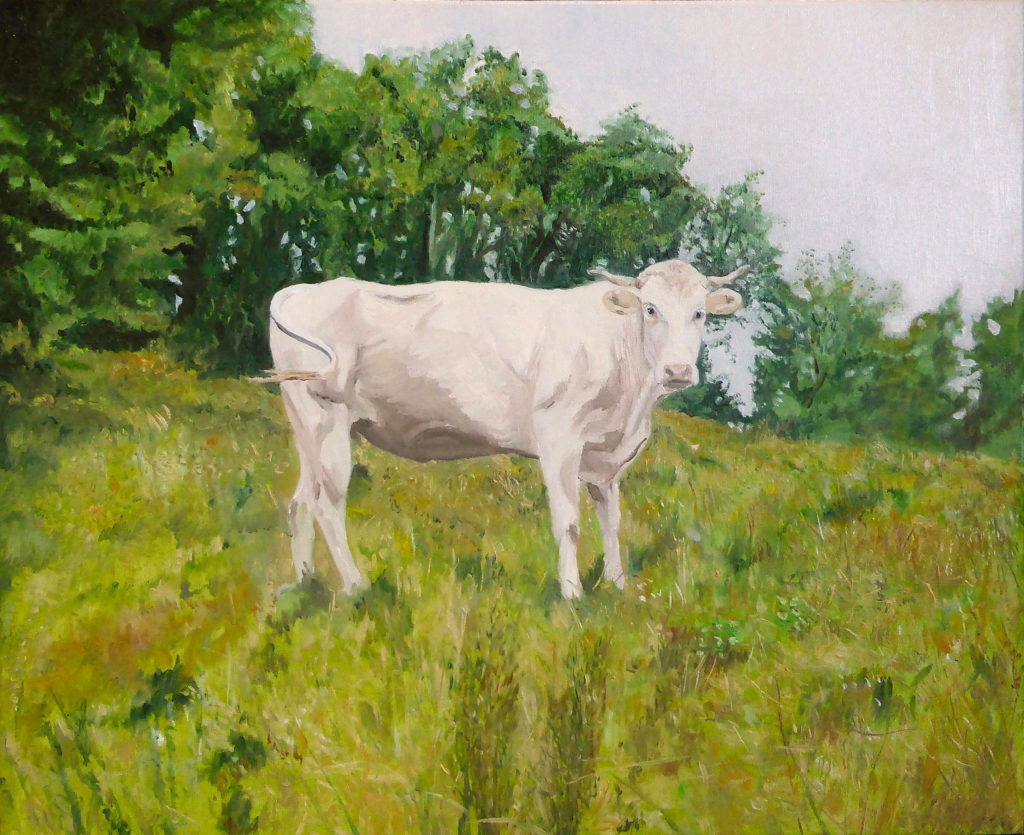Being-in-the-world
huile sur toile 80×80 cm Coll Particulière
How can we view “nature” without reducing it to something in front of us, an object ultimately at the subject’s disposal? How can we paint a landscape without making it the inert reference of a representation (whether it be impressionist, expressionist, or any other style)? I asked myself this question during my previous painting: on the banks of the Volp. To paint the landscape while being immersed in it, and not from the exteriority of a subject facing its object… With this painting, the question becomes: how to paint the living? To paint the living without reducing it to a mere “being,” a thing… Take, for example, a dove. Existential philosophy considers that only humans are beings-in-the-world. Alone in the midst of entities that supposedly do not have a world of their own. But if no living being is separable from the whole of life that composes what we still, for lack of a better term, call nature, then can’t we think that every living being is being-in-the-world ? This may be where respect begins.
